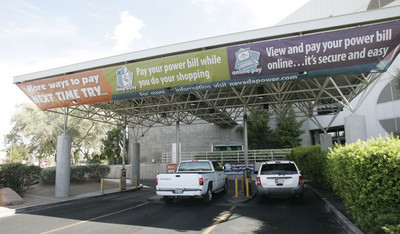Power users may face shutoff
Rick Hackman, manager of the Public Utilities Commission's consumer complaint division, expects his office phones to start ringing as the temperature declines in the fall.
That's when Nevada Power Co. will begin disconnecting residential customers who are past-due on payments.
A commission rule prevents the electric utility from cutting off power to delinquent residential customers when the temperature is forecast to exceed 105 degrees.
During July, August and September, Southern Nevada's temperatures prevent the utility from disconnecting residential customers for nonpayment most of the time, he said.
"The commission didn't want people getting ill or dying" because they have no power for air conditioning during summer scorchers, Hackman said.
"The downside is that their outstanding balance continues to grow, and they grow at exponential rates in the summertime," Hackman said. "There are going to be some customers with some very large bills."
The economic downturn has increased the number of delinquent bills, too, Hackman said.
Nevada Power Co., while disclosing some statistics, refused to say how many customers have been disconnected over the last year.
Nor would the utility reveal the current total number of delinquent bills compared with last year's number.
"That's not a public number," Nevada Power spokesman Adam Grant said.
Nevada Power will disclose the number when it files for a rate change in December, Grant said. Customer rates typically cover utility expenses for uncollectible accounts.
The Nevada Welfare Division has seen consumer applications for utility bill financial assistance soar 11 percent to 29,000 in the fiscal year that ended in June for the previous 12 months.
"The growth is showing no signs of slowing," said Lori Wilson, chief of the employment and support services for the Department of Health and Human Services.
Economic hard times "absolutely" contributed to the increase, she said.
"Nevada's economic climate is not good right now," Wilson said. "We know energy costs are increasing daily. We've all felt that."
Other factors, such as increased public knowledge about the utility bill assistance program, also increased demand for bill payment assistance, she said.
California consumers also are struggling to stay current on their bills.
Pacific Gas & Electric Co. told the Los Angeles Times that it plans to shut off 163,700 customers for nonpayment through July of this year, up 6.1 percent from the same period last year.
Southern California Edison reported service was disconnected for 165,000 of its 4.8 million customers between January and May, a 14 percent increase over a year ago.
Nevada Power would not provide comparable numbers. The local electric utility said that the number decreased 5 percent between January and May when weather was cool. Yet, Nevada Power said disconnects climbed 5 percent for the 12 months ending in June.
Although the utility wouldn't say how many customers were disconnected over recent periods, the number of disconnects generally runs eight-tenths of a percent of the utility's total customer base, or about 7,000 monthly, said Bruce Bullock, executive for customer service.
Nevada Power sends notices by mail so that customers receive a disconnect warning 48 hours in advance, Grant said. Customers may prevent the disconnection by paying the amount past due or by negotiating payment arrangements.
The utility wants consumers to pay past-due amounts over no more than three months.
Consumers who have pending applications for state financial assistance may get expedited approval to avoid disconnection if they meet certain requirements, Wilson said.
Bullock recommends that customers join a program that keeps their bills level throughout the year so that they don't face such a large jump in summer months when air conditioning use boosts power consumption.
Wilson urges power customers to keep paying as much as they can on utility bills because the state program only covers a portion of the bills.
To subsidize consumer bills, the state taps $14 million yearly from a federal grant and from the Universal Energy Charge, which adds 29 cents monthly to the typical residential power bill.
During the current fiscal year, the state expects to use all of its past reserves in the Universal Energy Fund, which subsidizes utility bills of low-income consumers, Wilson said. As a result, the welfare division has capped the financial assistance based on income and family size.
Contact reporter John G. Edwards at jedwards@reviewjournal.com or 702-383-0420.






















